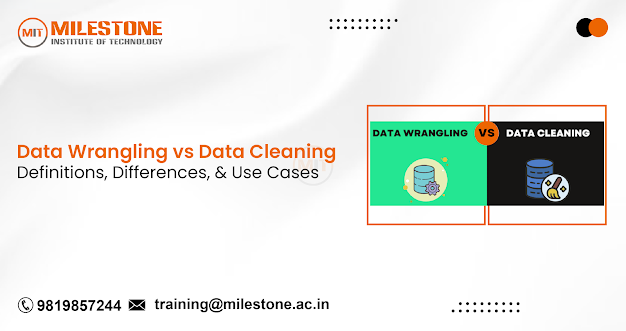Data Wrangling vs Data Cleaning: Definitions, Differences, and Use Cases
What is Data Cleaning?
Data cleaning, also known as data cleansing, is the process of identifying and correcting errors or inconsistencies in data to improve its quality. This step is crucial as dirty data can lead to incorrect analyses and insights. Data cleansing includes a variety of tasks, such as:
Removing duplicates: Eliminating duplicate items that might skew the analysis.
Handling missing values: Filling in or removing missing data points.
Correcting errors: Fixing typographical errors or inconsistencies in data formats.
Standardizing data: Ensuring consistency in data entry, such as dates and units of measurement.
The goal of data cleaning is to ensure that the dataset is accurate, complete, and reliable, making it suitable for further analysis.
What is Data Wrangling?
Data wrangling, often referred to as data munging, is a broader process that involves transforming and mapping raw data into a more usable format. It encompasses data cleaning but extends beyond it to include:
Data integration: Creating a unified dataset by integrating data from a variety of sources.
Data transformation: Value normalizing and aggregating data transforms into the required form or structure.
Data enrichment: Enhancing the dataset by adding additional information or context, such as demographic data.
Data filtering: Selecting relevant data for analysis, which may involve excluding unnecessary columns or rows.
Data wrangling is an essential step in preparing data for analysis, enabling data scientists and analysts to focus on deriving insights rather than dealing with unorganized data.
Crucial Differences Between Data Cleaning and Data Wrangling
While both data cleaning and data wrangling are crucial in the data preparation process, they serve different purposes and involve distinct activities:
Scope and Purpose:
Data Cleaning: Focuses specifically on improving data quality by correcting errors and inconsistencies.
Data Wrangling: Encompasses a wider range of tasks, such as cleansing the data, in order to get the data ready for analysis by converting and integrating it.
Processes Involved:
Data Cleaning: Involves tasks like removing duplicates, handling missing values, and correcting errors.
Data Wrangling: Includes data cleaning but also involves data integration, transformation, enrichment, and filtering.
End Goal:
Data Cleaning: Aims to produce an accurate and reliable dataset.
Data Wrangling: Aims to produce a dataset that is not only clean but also structured and enriched, ready for analysis.
Use Cases of Data Cleaning and Data Wrangling
Both data cleaning and data wrangling are applicable across various industries and domains, including finance, healthcare, marketing, and more. Here are some specific use cases:
Financial Analysis: Ensuring data accuracy in financial transactions and stock data is crucial for accurate market analysis and investment decisions.
Healthcare: Cleaning patient records and wrangling data from different sources (e.g., labs, clinics) helps in accurate diagnosis and treatment planning.
Marketing: Data wrangling allows marketers to combine data from various channels (e.g., social media, email campaigns) to gain a comprehensive view of customer behavior.
Research: Academics and researchers use data cleaning and wrangling to prepare datasets for statistical analysis, ensuring that the data is accurate and comprehensive.
Conclusion
Data wrangling and data cleaning are foundational steps in the data preparation process, each playing a distinct yet complementary role. Data cleaning focuses on improving data quality, while data wrangling encompasses a broader set of tasks, including cleaning, to prepare data for analysis. Understanding the differences between these processes and their respective use cases can significantly enhance the efficiency and effectiveness of data analysis efforts.
.png)
.png)


Comments
Post a Comment